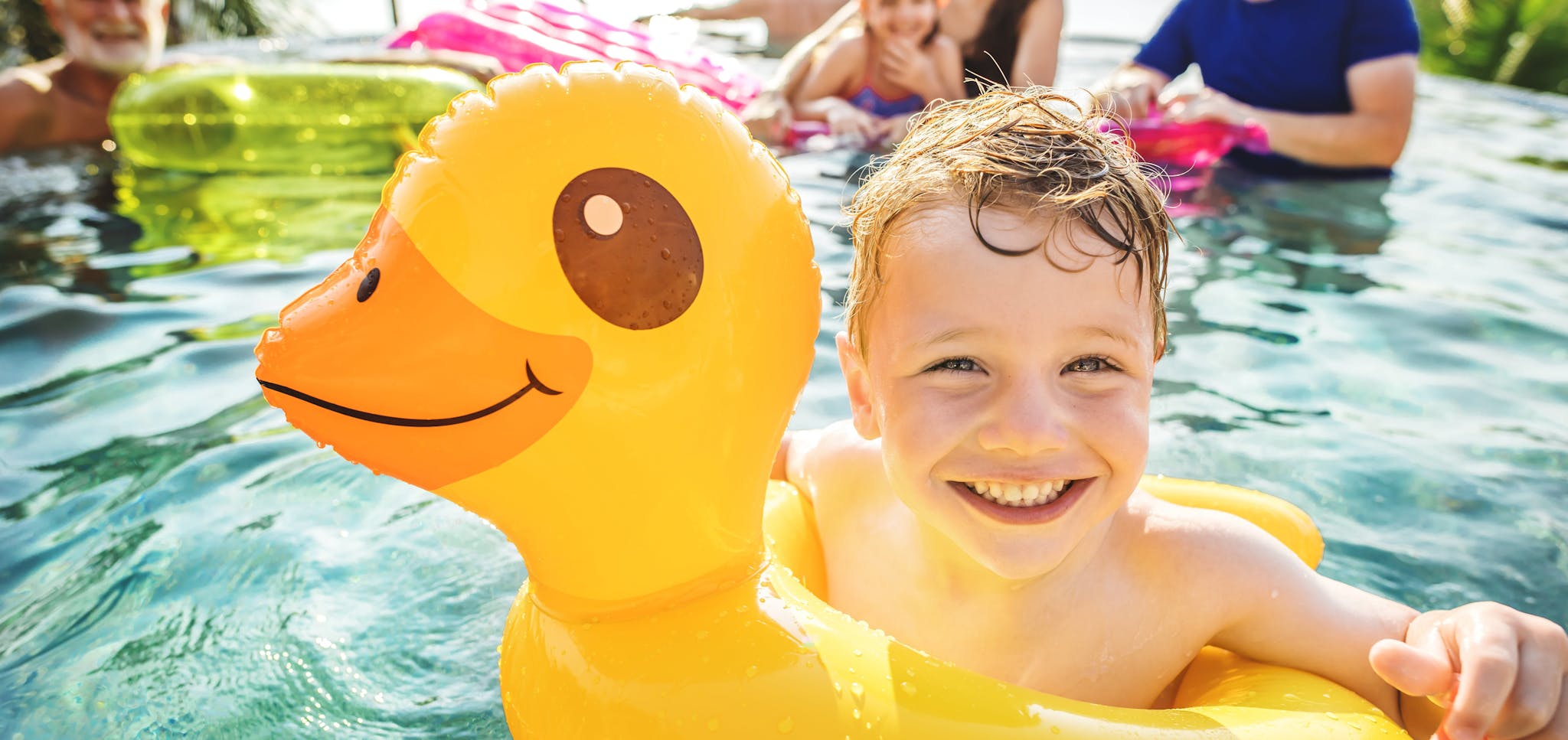
2024-07-12T16:54:51
Sunscreen Travel Tips
- Dermatology
May 22, 2019 | Pediatrics

Drowning is the leading cause of injury-related death in children ages 1-4 and the third leading cause of injury-related death in children and teens ages 5-19. This statistic is a sobering reminder to parents, guardians and caregivers everywhere that water safety is not something one should take lightly. With days at the lake, pool or pond just around the corner, it’s an excellent time to address water safety and learn what you can do to reduce the risk of water-related tragedies.
Distractions can be dangerous in just about any situation, but when you’re near the water with your little ones, distractions such as cell phones, food, alcohol or even small talk can be fatal. When it comes to water safety, the best tip you can receive is to get rid of all distractions. Keep your eyes on your children at all times, and make sure they’re always within arm’s reach of an adult whenever they are in or near water.
Designate a responsible adult who is free from distractions to watch young children while in the water, even if there is a lifeguard on duty. If you have to run to the restroom or leave the area for even a moment, take your child with you or have another adult take over your watch.
Teach your young children to never go near water without a grownup. If your children are older, make sure they swim with a partner—even teens shouldn’t swim alone. If a buddy is not available, do not let your child swim.
Swimming lessons can teach children vital water survival skills, including:
The American Academy of Pediatrics offers a great resource to help parents learn more about swimming lessons.
Whenever you set water safety rules, make an effort to explain why you set them and that they will help keep your children safe. For example, explain to your children why life vests are important and teach them about the dangers of swimming in an open body of water, such as riptide, currents and undertow.
Remember that drowning isn’t always what it looks like on TV. Many children do not yell or splash around; in reality, most drowning incidents are quiet and difficult to notice. That’s why it’s so important for both parents and kids to learn how to be safe in the water, and why you should always check the water first if you can’t find your child. By taking the time to brush up on water-safety tips now, you can ensure that your days by the pool or at the beach are full of nothing but fun and sunshine. For more information on what you can to do to protect the safety of your children and yourself, talk to your doctor.
“Swimming.” Safe Kids Worldwide. https://www.safekids.org/safetytips/field_risks/swimming-and-water “Drowning: It Can Happen in an Instant.” National Safety Council. https://www.nsc.org/home-safety/tools-resources/seasonal-safety/drowning “Prevention of Drowning.” The American Academy of Pediatrics. https://pediatrics.aappublications.org/content/143/5/e20190850 “Pool Dangers and Drowning Prevention―When It’s Not Swimming Time.” HealthyChildren.Org, by The American Academy of Pediatrics. https://www.healthychildren.org/English/safety-prevention/at-play/Pages/Pool-Dangers-Drowning-Prevention-When-Not-Swimming-Time.aspx

WRITTEN BY:
The Live Better Team


2024-07-12T16:54:51

2024-07-02T11:42:04

2024-07-01T13:49:28

2024-06-21T14:29:51
This information is not intended to replace the advice of a medical professional. You should always consult your doctor before making decisions about your health.